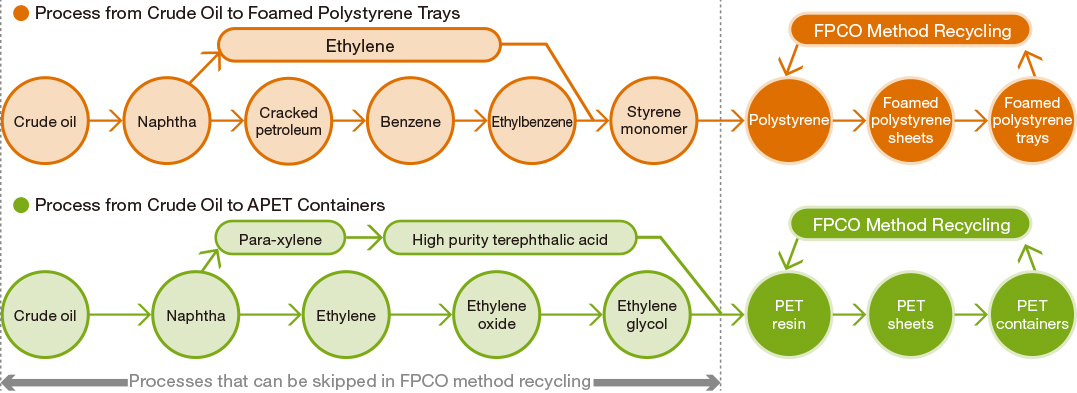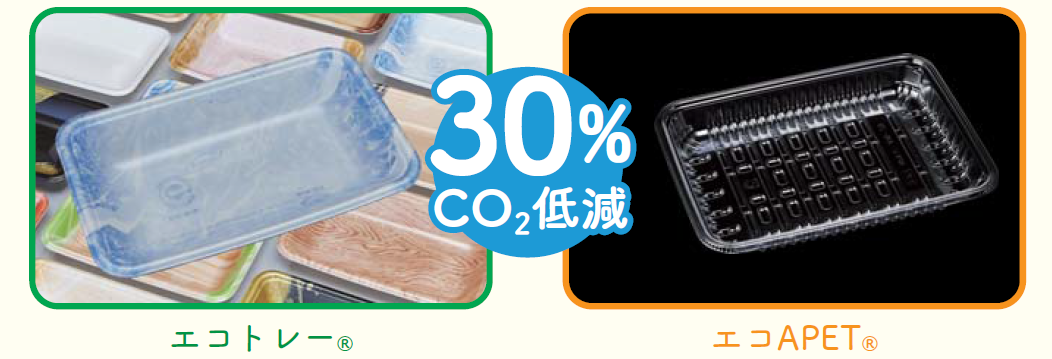Recycling Effect
Results of the Recycling Business
Since its launch in 1990, FPCO method recycling has achieved increasingly significant results year after year.
In 1992, there were 1,660 used container collection points, and by 2018 this number had grown to 9,200, which collection volume increasing almost tenfold over this period.
Collecting used containers and using them as recycled materials produces various benefits.
The immeasurable spillover effects include reduced oil consumption as a natural resource serving as a raw material in the manufacturing process, and reduced waste generation thanks to the recycling of resources.
For preventing the exhaustion of natural resources and for preserving the global environment, FP Corporation is pushing ahead with the use of terrestrial resources through the recycling business.
The results of efforts
| FY2018 | Accumulated total (1990 to March 2019) | ||
|---|---|---|---|
|
Foamed Trays | Volume collected | 6,446 tons | 145,089 tons |
| Number of trays | 1,611.50 million | 36,267.50 million | |
|
Transparent Containers | Volume collected | 2,284 tons | 16,458 tons |
| Number of containers | 228.40 million | 1,645.80 million | |
|
PET bottles | Volume collected | 42,260 tons | 212,549 tons |
| Number of bottles | 1,690.40 million | 7,813.62 million | |

CO₂ Emissions Reduction Effect

The calculation of the environmental impacts of the processes from the production of food tray materials to disposal and recycling confirms that CO₂ emissions from Eco Tray® and the Eco APET® are 30% lower than those from trays that are newly produced from crude oil.
The use of these recycled containers resulted in CO₂ emissions being reduced by 135,000 tons in FY2018.
CO₂ emissions reduction in FY2018: About 135,000 tons
The calculation of the environmental impacts of the processes from the production of food tray materials to disposal and recycling confirms that CO₂ emissions from Eco Tray® and the Eco APET® are 30% lower than those from trays that are newly produced from crude oil.

